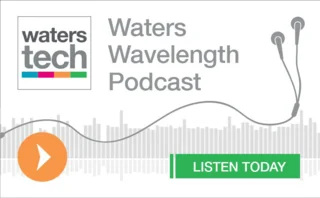ASX Gives Green Light to Clearing Blockchain
The exchange expects to release the proposed timing for transition for market feedback by the end of March 2018.

“Today’s decision is a decision around the technology and the choice of vendor,” said Dominic Stevens, CEO of ASX, in a conference call with journalists on December 6. “With this decided, we can go back to our stakeholders, post the significant input they’ve given us around what they’re looking for in a new clearing and settlement system, and deliver to them in March 2018, the scope of Day 1 functionality and the expected timing going forward. Post consultation with the market, we will then lock in this timing and scope, which we would expect in the middle of next year.”
He noted that the platform is permissioned, users will be regulated entities, it will not be anonymous, and that ASX will remain the trusted entity so that there is not a need for a consensus mechanism, which “is one of the main reasons that other [blockchain] implementations can be slow and use significant amounts of energy,” he said.
Additionally, participants will be able to connect to the system via traditional messaging, “so it’s no different to what they did before, except the messaging has been modernized and standardized, all by connecting directly to the distributed ledger itself via a node.”
Two years ago, ASX announced that it was going to replace CHESS, which was introduced in the 1990s. By September 2017, it appeared that the operator was leaning toward a DLT solution. After conducting numerous tests—which included two independent third-party security reviews—the exchange felt confident in Digital Asset’s platform’s capacity, security, resilience, and functionality compared to the idea of building out a more traditional infrastructure.
The exchange has also given more than 80 distributed-ledger technology (DLT) demonstrations to more than 500 attendees and conducted over 60 CHESS replacement workshops for more than 100 organizations from the global financial services industry. It is one of the first major examples of distributed-ledger technology being put into production in such a high-profile manner.
“This change gives ASX the opportunity to provide a much richer, real-time synchronized dataset for the market; this should allow the industry to create new products and reduce costs,” Stevens said. “Updating a system like this is a big undertaking, so it’s only done once every 15 or 20 years, so we have to make sure we’re as future-proofed today as much as possible.”
The exchange will now work with stakeholders on finalizing the scope of Day One functionality for the new system. As Stevens noted, consultation will continue into 2018 and the proposed timing for transition is expected to be released for market feedback by the end of March 2018.
Additionally, in conjunction with its decision, ASX will exercise its pro-rata right to participate in Digital Asset’s recent Series B fundraising and subscribe for $3.5 million convertible notes. ASX and Digital Asset have agreed to work exclusively on DLT in Australia and New Zealand. The exchange operator has an 8.5 percent stake in the company.
Industry Consternation
Last month, consultancy Opimas released a report detailing the blockchain landscape going into 2018. The report stated that “if the ASX infrastructure decides in December to replace its legacy CHESS clearing platform with its blockchain solution, it will be the first major infrastructure switch. Depending on the results, it could pave the way for more blockchain rollouts across Asian markets.”
In an interview with Waters, Axel Pierron, Opimas’ co-founder and managing director, expressed skepticism about this move from CHESS to the blockchain. He said that many firms in the market complained because the shift does not answer their need of additional functionalities from the CHESS system—it’s not an upgrade of an existing product; rather, it’s an infrastructure shift.
“[ASX’s] users in Australia—a lot of the users complained that implementing a shared-ledger environment doesn’t answer their current needs; it’s a technology shift that doesn’t bring any upgrade at this point. [The project between the] ASX and Digital Asset Holdings, I think, is very important to watch it because if it’s successful in the equity market it would be a major breakthrough of that technology in one of the major asset classes,” Pierron says. “To be frank, it’s the one I want to watch because it would prove me wrong. I think it will be very tough to do.”
During the call, when asked a direct question by WatersTechnology as to this concern that this is a sideways shift that doesn’t add much new functionality to the market, Peter Hiom, deputy CEO of ASX, said that the operator is “in deep consultation with the market” and is in the process of identifying potential enhancements and prioritizing what should come first.
“The technology itself is going to present an opportunity for the market to operate in a new way—it’s going to allow them to automate the reconciliation processes that they currently have to do via messaging,” Hiom said. “When you think about what that creates—which is a real-time view on data—that, we think, is going to give a lot of opportunities for our customers to create new efficiencies and new innovations. Having said all of that, the system is also architected to enable customers to connect to the platform in a traditional way, as well. So really, when we implement the platform, customers are going to have the choice: They can either connect to the platform just like they do it now—albeit, with a contemporary messaging architecture—or they can connect to the platform in a new way that would reduce the need for reconciliation between their own infrastructure and ours.”
During the call, representatives also noted this move was written into its capital expenditure program two years ago and it is going to be a “marginal cost” for the exchange, though there are questions as to how much it will cost industry participants.
In a separate question asked by WatersTechnology, Cliff Richards, general manager for equity post-trade services said: “Initially and understandably there are more question marks than understanding about the technology and how we might use it. But what we’ve found over the last year is a larger appetite typically from our larger clients usually because they’ve got the resources to understand more of this technology and they’re looking at it themselves.”
Stevens added, though, that since there will be choice built into this move, the industry won’t have to move all at once on Day One.
“Given the ability to actually interact with the system via messaging or via a node or being part of the distributed ledger is that effectively the whole industry doesn’t have to move all at once,” he said. “What can happen is if everyone has to move all at once you’re bound by the slowest member. People can choose that they might actually keep doing what they’re doing for another six months or a year, whatever that might be, and then work over to what would be a richer data experience for them.
“So I think that makes it for an easier transition when we get to that point for everyone to be working together, some perhaps at different paces. We certainly want to allow sufficient time for those who might not be ready to take a node, and we will allow sufficient time for them to understand what that means, but we haven’t put a date on how long that option would exist for,” he continued.
Further reading
Only users who have a paid subscription or are part of a corporate subscription are able to print or copy content.
To access these options, along with all other subscription benefits, please contact info@waterstechnology.com or view our subscription options here: http://subscriptions.waterstechnology.com/subscribe
You are currently unable to print this content. Please contact info@waterstechnology.com to find out more.
You are currently unable to copy this content. Please contact info@waterstechnology.com to find out more.
Copyright Infopro Digital Limited. All rights reserved.
As outlined in our terms and conditions, https://www.infopro-digital.com/terms-and-conditions/subscriptions/ (point 2.4), printing is limited to a single copy.
If you would like to purchase additional rights please email info@waterstechnology.com
Copyright Infopro Digital Limited. All rights reserved.
You may share this content using our article tools. As outlined in our terms and conditions, https://www.infopro-digital.com/terms-and-conditions/subscriptions/ (clause 2.4), an Authorised User may only make one copy of the materials for their own personal use. You must also comply with the restrictions in clause 2.5.
If you would like to purchase additional rights please email info@waterstechnology.com
More on Emerging Technologies
This Week: Startup Skyfire launches payment network for AI agents; State Street; SteelEye and more
A summary of the latest financial technology news.
Waters Wavelength Podcast: Standard Chartered’s Brian O’Neill
Brian O’Neill from Standard Chartered joins the podcast to discuss cloud strategy, costs, and resiliency.
SS&C builds data mesh to unite acquired platforms
The vendor is using GenAI and APIs as part of the ongoing project.
Chevron’s absence leaves questions for elusive AI regulation in US
The US Supreme Court’s decision to overturn the Chevron deference presents unique considerations for potential AI rules.
Reading the bones: Citi, BNY, Morgan Stanley invest in AI, alt data, & private markets
Investment arms at large US banks are taken with emerging technologies such as generative AI, alternative and unstructured data, and private markets as they look to partner with, acquire, and invest in leading startups.
Startup helps buy-side firms retain ‘control’ over analytics
ExeQution Analytics provides a structured and flexible analytics framework based on the q programming language that can be integrated with kdb+ platforms.
The IMD Wrap: With Bloomberg’s headset app, you’ll never look at data the same way again
Max recently wrote about new developments being added to Bloomberg Pro for Vision. Today he gives a more personal perspective on the new technology.
LSEG unveils Workspace Teams, other products of Microsoft deal
The exchange revealed new developments in the ongoing Workspace/Teams collaboration as it works with Big Tech to improve trader workflows.







